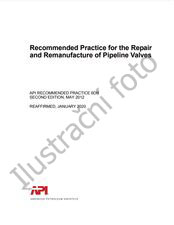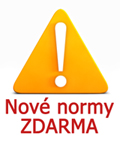Potřebujeme váš souhlas k využití jednotlivých dat, aby se vám mimo jiné mohly ukazovat informace týkající se vašich zájmů. Souhlas udělíte kliknutím na tlačítko „OK“.

API PUBL 4694-ed.1999
Laboratory Analysis of Petroleum Industry Wastewaters Arranging for Analysis and Understanding Laboratory Reports
Přeložit název
NORMA vydána dne 1.12.1999
Informace o normě:
Označení normy: API PUBL 4694-ed.1999
Datum vydání normy: 1.12.1999
Kód zboží: NS-1139856
Počet stran: 165
Přibližná hmotnost: 526 g (1.16 liber)
Země: Americká technická norma
Kategorie: Technické normy API
Anotace textu normy API PUBL 4694-ed.1999 :
API PUBL 4694, 1999 Edition, December 1999 - Laboratory Analysis of Petroleum Industry Wastewaters Arranging for Analysis and Understanding Laboratory Reports
This manual is designed for environmental coordinators, managers, corporate staff, and others who must address environmental compliance reporting and regulatory issues. It is also useful for field personnel responsible for obtaining wastewater sample analyses to fulfill environmental regulatory requirements.
This manual assumes that users have some familiarity with wastewaters in the petroleum industry and with the basic requirements of wastewater permits. It is helpful if users also have some basic knowledge of wastewater constituents, analytical methods, analytical laboratories, and environmental regulatory agencies.
Types of Wastewaters Covered
This manual addresses wastewaters associated with the petroleum industry? including:
- 1) Petroleum refining
- • Treated process effluent for direct discharge,
- • Pretreated process effluent for indirect discharge (for example, to a
- • Storm water.
- 2) Marketing and pipeline terminals
- • Treated process effluent for direct discharge,
- • Pretreated process effluent for indirect discharge,
- • Storm waters, and
- • Untreated process wastewater such as tank water draws.
- 3) Underground storage tank cleanups
- • Leaks and spills to ground water.
- 4) Petroleum production facilities
- • Produced water from crude oil extraction.
Most of these wastewaters are direct or indirect point source discharges to surface waters, which are regulated under the U. S. Environmental Protection Agencys (EPAs) National Pollutant Discharge Elimination System (NPDES) under authority of EPA or an NPDES-authorized state. Thus, most of the discussion and examples in this manual relate to the NPDES program.
Purpose of This Manual
The purpose of this manual is to help the user:
Understand the technical and regulatory issues associated with obtaining analytical data on wastewater samples as well as the interpretation of the data.
Understand data quality objectives (DQOs) and articulate DQOs at the beginning of a project.
Select analytical methods and evaluate their pros and cons.
Understand and specify method detection limits, quantification limits, reporting levels, minimum levels, and other related terms.
Understand the concepts of laboratory QA/QC and be able to specify, request, and interpret QNQC data such as spikes, duplicates, and blanks.
Understand how matrix interference affects analyses and how to work with the laboratory to resolve such problems.
Evaluate and select a laboratory.
Review laboratory reports.
Understand what to do if a QNQC requirement is failed.
Whats in This Manual
This manual contains information on two levels. Part I is designed to provide the most critical information in a simple format that can be read quickly. Checklists for various topics based on the information in Part I have been developed for practical use and are found in Part IV. Part II of the manual contains additional detail on the topics discussed in Part I, as well as other related topics. Part III of the manual includes references and acronyms. Examples of case studies, laboratory reports, and data calculations are given throughout the manual.
Users of this manual who need information very quickly about a particular topic should go to Quick Start at the end of this Introduction. For other users who have less pressing needs, the following outline gives a brief overview of each chapter in the manual.
Odebírejte informace o nově vydaných normách ZDARMA:
Chcete pravidelně odebírat informace o nově vycházejících normách z celého světa a to zcela zdarma?
Přihlašte se k odběru. Vše je velice jednoduché a absolutně ZDARMA.
Na výběr máte vydavatele z celého světa.



 Cookies
Cookies
